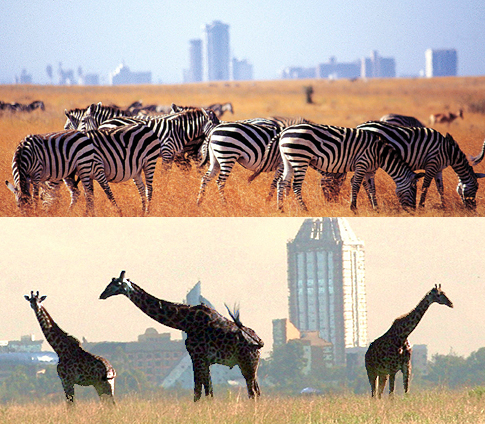 Although the numbers of wild animals seen by a typical tourist on safari has grown substantially during my career, the fact is that wild animals in Africa are in a serious decline.
Although the numbers of wild animals seen by a typical tourist on safari has grown substantially during my career, the fact is that wild animals in Africa are in a serious decline.
Lion, black rhino, giraffe and elephant are far more numerous in wild reserves than when I began guiding in the 1970s. I believe, for instance, there are too many elephant. Dramatic encounters with all these animals all are more frequent, today, making a safari that much more exciting.
But overall black rhino is near extinction, lion and giraffe have declined by as much as a third, and there is great controversy over whether elephant are threatened.
This may seem like a contradiction, but it isn’t at all.
Parks and reserves in Africa have received more and more efficient protection, especially in the last three to four decades, precisely because tourism brought in large amounts of foreign currency. As tourism grew throughout the 1980s and 1990s, tourist services provided more and more jobs and many tertiary economic benefits to the local communities.
This added protection allowed animals to prosper in ways they couldn’t previously.
Efforts mostly in southern but also in eastern Africa stemmed wild animal disease (bovine sleeping sickness, hoof-and-mouth disease, mange, etc.) often by removing infected wild animals from the population or [in the case of mange] actually treating wild animals.
Intervention in the wild, of the sort which was used to eliminate mange from cheetahs in the Serengeti/Mara ecosystem, is very rare, but significant. A similar effort is ongoing to protect mountain gorillas from measles.
The great veterinary fence constructed in Botswana in the 1980s essentially to reduce hoof-and-mouth disease in the domestic beef industry had obvious effects with the wild animals as well.
While wild animal intervention has been rare, intervention in restoration of threatened habitats has been aggressive. This has included simple routines of burning tall grass to construction of bore holes (wells) to provide constant water.
In populations tending to be inbred, expensive operations to relocate wild animals increased the genetic biodiversity and thus the health of wild animals.
All of the above has led to much healthier and more robust protected areas with strong wild animal populations.
But the story is much different outside these protected areas.
Africa has grown substantially in the last half century, and agricultural needs in particular get the very highest priority. In the past edges of protected wild areas were fluid and poorly determined. Often hunting reserves rounded the perimeter of a national park and the perimeter of the hunting reserve was often unpopulated bush.
That’s no longer the case. As Africa’s populations and industries increase there is a clearer and more exact delineation between the protected parks and reserves and developed areas.
The borders of Arusha National Park are literally farms for maize and beef. There is nothing but a hedge which separates portions of them.
Watermelon and maize farms are cultivated to the very edges of the very wild Tarangire National Park.
Exploding gated housing developments now border important sections of the Mt. Kenya National Park, which is still home to a variety of wild animals.
In the non-reserve and non-park areas wild animals are considered vermin, especially by farmers. So not only is the habitat tensely contained, but leaving the habitat is near certain death.
The overall average of the relatively small amount of protected reserves and parks (under 8%) and the larger wilderness slowly being developed results in the overall decline in wild animal populations.
So yes, “the wild” is contracting considerably even as we successfully make richer and more fulsome the biosphere within that which remains.